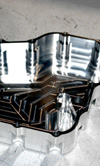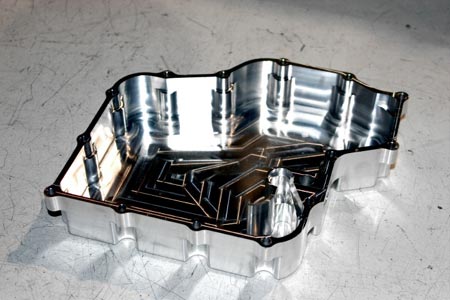Wet sumps
 It is a fact that wet-sump oiling systems are rare in racing. Given the g-loadings that most racecars experience, controlling the oil level while ensuring a constant supply of lubricant is far easier with a dry-sump set-up. However, some series still require the use of a wet sump, notably those for touring cars running to the FIA S2000 regulations.
It is a fact that wet-sump oiling systems are rare in racing. Given the g-loadings that most racecars experience, controlling the oil level while ensuring a constant supply of lubricant is far easier with a dry-sump set-up. However, some series still require the use of a wet sump, notably those for touring cars running to the FIA S2000 regulations.
Running wet sumps has caused problems for many years, as one engineer from a notable engine manufacturer explains, "We've said for a long time that a dry-sump system would be cheaper, more reliable and easier for everyone. Big parts of the budgets are routinely spent trying to make a wet-sump system with the standard production sump pan work in a racing environment. It's been a nightmare for every project we've been involved with, right back to the Sierra Cosworth days."
So what can engineers do to optimise what is essentially a flawed system? Here are some of the approaches used to mitigate the disadvantages of running a wet sump.
Baffles:
Baffles or windage trays are one of the most commonly used systems to control oil in a wet sump. They often consist of horizontal and vertical plates within the sump, and often feature one-way gates to prevent oil surging away from the pick-up. In the case of the S2000 regulations, the cars have to retain the standard sump pan, so controlling the slosh of oil within is vitally important.
However, baffles need to be carefully designed to ensure they do not in fact restrict oil flow towards the pick-up, or slow the return of oil from the upper half of the engine. With powerful CFD simulation packages now becoming more accessible outside the upper echelons of motorsport, engineers have a powerful tool to assess the effectiveness of baffling. Whereas previously a system could only be tested by running the car and logging the oil pressure traces, designers can now get far closer to an optimum solution without making large numbers of prototypes.

Movable oil pick-ups:
One other solution to preventing oil starvation is a pivoting oil pick-up pipe. Instead of trying to keep the oil near the pick-up, the pick-up is able to move around in the sump, using the same force vectors that affect the oil.
However, to be effective, a pivoting pick-up will often require the use of a dedicated sump pan, in order to allow the pick-up to move freely. This means that if the standard manufacturer's sump needs to be retained, the effectiveness of any pick-up design is severely limited.
External oil reservoirs:
If it still proves impossible to maintain reliable oil pressure using either of the above methods, another option is the use of a pressurised, external oil reservoir. In recent years this has been the route adopted by a number of teams competing in the British Touring Car Championship.
The reservoirs are pressurised up to normal oil pressure and then the release of oil is controlled by a pressure-sensitive switch. If the pressure in the engine oil system drops below a preset level, the valve opens, allowing extra oil into the engine to maintain pressure.
Although it's effective, there are a number of disadvantages with the system, notably additional weight and complexity. It also does not give complete insurance against pressure loss - as the author discovered, at the cost of a crankshaft and set of rods, after a pressurised system could not handle the oil surge in a boxer engine!
Fig. 1 - A wet-sump system with built-in pivoting oil pick-up, designed specifically for off-road racing applications
Written by Lawrence Butcher